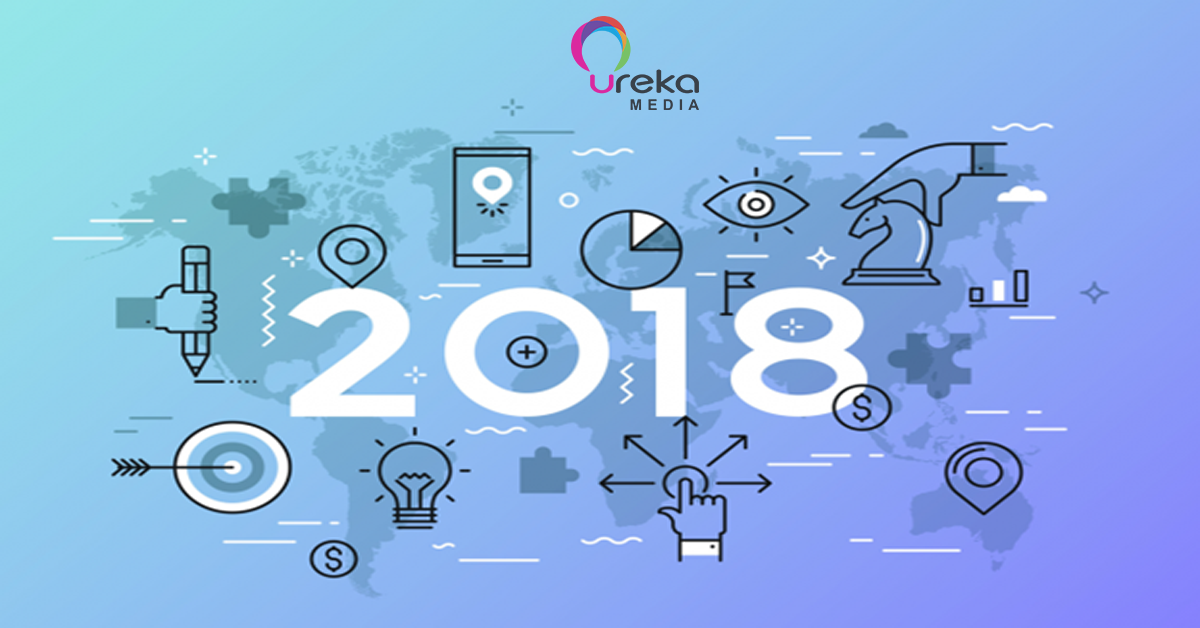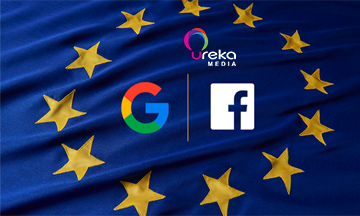


Make people SEE and REMEMBER the brand



Get people to UNDERSTAND and
WANT the brand



Change people's BEHAVIOR and
get them to CONVERT



Take care of people to CONVERT OFTEN and
ADVOCATE the brand
U News
3 RESOLUTIONS FOR DATA-DRIVEN MARKETERS IN 2018
Published on December 07, 2017.
Credit: Bazaarvoice
This time of year is ripe for reflection and goal-setting. It's a time when companies can look back and take stock of the past year: what worked, what didn't, and what lessons can be applied to the year ahead.
Data still keeps marketers and advertisers up at night. And it's an area that many advertisers (and their host of partners) will be assessing ahead of 2018. As data-driven advertising has grown up and swiftly moved from a nice-to-have strategy to table stakes, brands and agencies are becoming savvier when it comes to who they're buying from and how they are measuring and quantifying the success of their data-driven efforts.
In fact, at a recent meeting of the minds among executives from NBC Universal, Facebook, Google, Twitter, and other digital players, a senior NBCU sales rep called for better transparency and was unabashedly critical of the "walled gardens" that exist within platforms like Facebook and Google. Transparency has remained a hot-button issue in the industry—and it is relevant to brand advertisers and consumers alike.
For advertisers, the allure of new data partners is hard to resist. They're all attracted to the newest, freshest data to give them an edge over the competition. There are many potential sources for advertising data that promise to help reach in-market consumers and achieve marketing and business goals in an efficient manner. So how do we choose?
The use of data sources and providers is on the rise, with 95 percent of respondents in a recent Ad Age study indicating that they are employing first- and third-party data in their media plans. But here's the rub: 64 percent said they are not fully clear on the origins of their data sources and three-in-four marketers are not fully confident their data is allowing them to reach in-market consumers.
The research indicates a tangible gap between the promise that data holds for the lion's share of marketers and the reality of advertisers' experiences with data and data providers. To that end, here are three resolutions for data-driven marketers to consider as we head into 2018.
Demand fresher data
The inherent power of data lies in its ability to precisely connect brands with the consumers that demonstrate the greatest propensity to convert, and thus deliver a return on ad spend. But what happens to this premise if an advertiser is targeting ads against "stale" data—that is, data that no longer delivers against this ideal. We've all experienced seeing an ad for a product we bought two weeks ago, and those of us in the industry share the same thought: "What a waste of money."
The phrase "in-market" gets tossed around quite often in marketing, but when is the last time you took a step back and revisited how you define the term in the context of your own data-driven advertising efforts? It's up to you to determine where the threshold of in-market lies for you. Is it a single visit to your product page, or is it an algorithmically informed portrait comprised of multiple data points?
Shift your approach from myopic to broad-based (and forward thinking)
Data providers might be able to razzle and dazzle brands with the expansiveness of their data sources or depth of their network, but it's also important to ask the right questions around when the data was collected and, most importantly, how often it is refreshed. The more real-time your data providers are, the greater chance you will connect with in-market consumers who are seeking out the products or services you sell.
A good rule of thumb: Prioritize partners who are can refresh their data sources on a monthly basis. Not all data is created equal, and data from four months ago vs. data that has been updated within the past 30 days will deliver vastly different results for your business.
Revise your definition of "in-market" consumers
There are multiple dimensions from which data can reveal which consumers have the greatest propensity to buy. While advertisers used to rely on simple site retargeting, today there are multiple angles from where data can be employed to paint a more robust picture of each potential buyer and their relative in-marketness. The more sources, of course, the clearer the picture becomes.
This resolution is especially important when it comes to the way you and your teams view seasonality patterns. Advertisers should no longer think of holidays and major shopping seasons as one-time inflection points for shopping activity. With the growth of online shopping, shoppers' timelines are much more nuanced and fluctuate across different categories. Partnering with a data provider than can provide vertical-specific insights into shopping behavior will allow you to not only target the right people, but also time those messages so they are surfacing at the best possible moments.
The beginnings of data in online advertising were short-sighted, but as the industry matures, advertisers must also evolve the way they buy and utilize data in their efforts. Given the advancements in artificial intelligence and data partners' ability to provide more holistic and sophisticated insights from multiple first-party sources, marketers should see data as a well of customer insights and a bevy for long-term inspiration. Put a different way, it isn't just about the short game anymore.
This resolution is all about looking beyond those walled gardens. Select longer term data providers that can provide ongoing insights into not only your own customers, but also consumers across other brands within your industry. To surface the partners that fit this profile, ask providers about their ability to deliver higher order insights that can help you put campaigns in market at the right time, with the right messaging, and yes, the right targeting against in-market consumers.
As the year winds down, stepping back and reflecting on what worked with your data efforts, and what can be improved, is important. Heading into 2018, advertisers should put more discipline and rigor around the way they choose their data partners and spend their ad budgets. Advertisers must identify and select the data that can provide fresh, in-market targeting combined with a broader, bird's eye, view of customer activity at large.
If you follow these three resolutions, your ad dollars can work a lot harder and better help you achieve your 2018 campaign goals.
Source: Adage
Recent Post





![[Performance Based Ads] 4 Ways B2B Marketers Should Be Using Mobile Video](https://urekamedia.com/uploads/uploads_image/20180424/20180424121153_88673.png)






